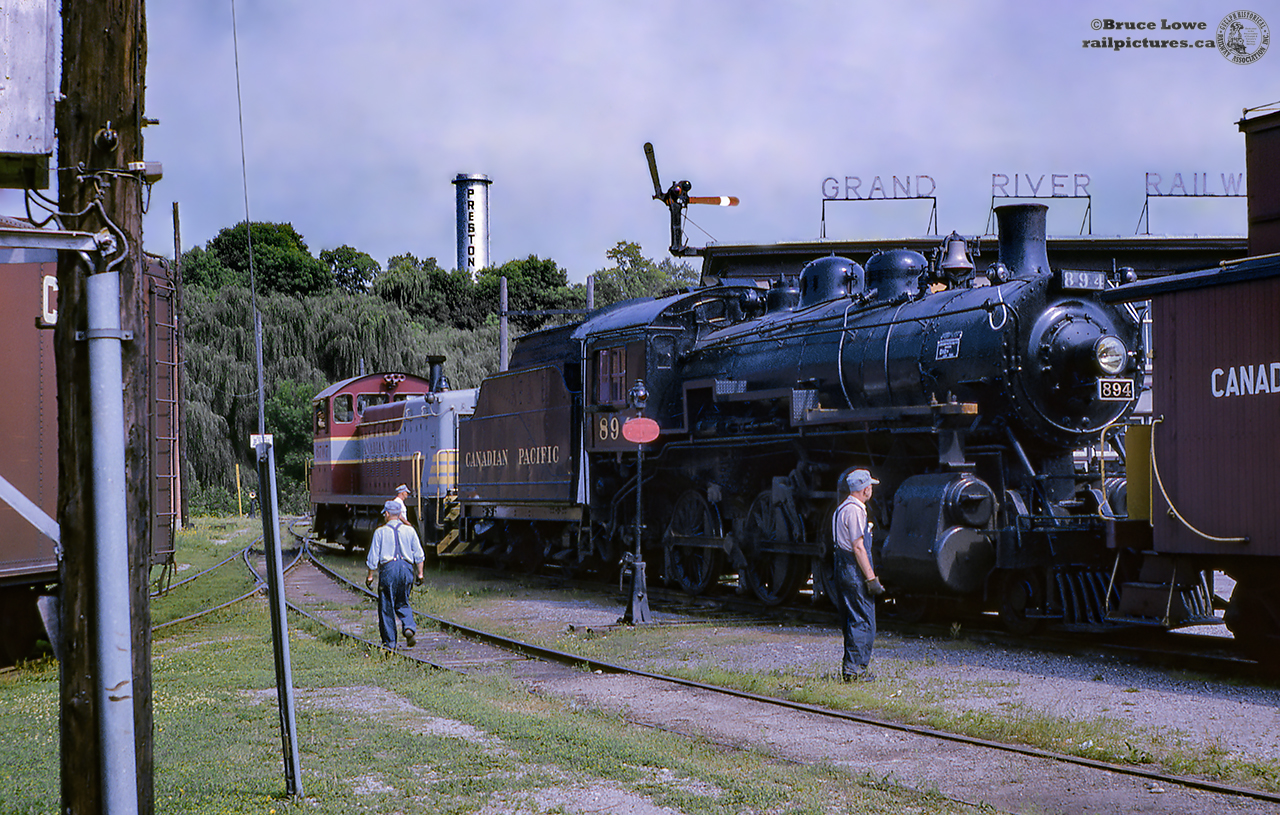|
Caption: An extra train has been called at the CPR, former GRR/LE&N, shops in Preston on July 13, 1964, to deliver CPR D-10-g 4-6-0 894 (Angus Shops, 1911) to its new home at the Doone Heritage Village at the South end of Kitchener. The hogger in the 6707 is seen waiting on the crew to finish looking over the 894 and van 435832 before getting underway to the CNR/CPR interchange just to the North of Queen Street South and Homewood Avenue (behind the now closed Nougat Bakery). Formerly home to the Lake Erie & Northern and Grand River Railway Equipment, the Preston Shops, built in 1907, would serve into the 1960's as a locomotive shop for the SW1200RS units now working the line. Eventually, the Preston based jobs would be moved to Galt, reducing Preston to a car shop until a fire destroyed the building in April, 1992. The "Grand River Railways Shop" sign still survives today on the East end of Barn 2 at the Halton County Radial Railway.
|



Great picture ! Have never seen a picture of a CPR steam engine on the GRR in Preston. Would this be the first time ? Thanks for posting.
This is an unreal photo. Just fantastic.
It’s interesting they interchanged the steamer there and not at South Junction in Kitchener.
John, it very well could have been the first CPR steam loco on the line. I am waiting on more info as to whether small steamers were used in construction of the various electric lines that eventually made up CPEL, though I don’t think there were any.
Jason, I’m wondering if the CPR crew that day had other work in the immediate area. Bruce’s slides show the engine dropped on one of the sidings, and 6707 leaving with the van. Shortly after a boxcar appears coupled to the front of 894, followed by the CNR arriving to lift 894 for the last part of the trip. Otherwise there was no traffic in those sidings can be seen.
There’s something you don’t see every day.
I remember going into the shops around 1990 or so just after moving here. A contractor was using it as a workshop to turn an old coach into a restaurant for someone in Toronto. Probably long gone.
Jason, looking at other photos I’m wondering whether South Junction was used as an interchange then or just as a junction. When the electrics were removed from service on October 1, 1961 the old line by Highway 8 was abandoned (when was it removed?) and the connection to South Jct. entered service. Shots from the diamond/interchange in 1971 show cars in the small yard that was also used for an industry (Clarke Forwarding?). Were both locations used to interchange or was the old one still used on its own for a few years?
Jacob,
I’m going to look at my old CN track diagram books from the area at the time and let you know what I find.
Was 894 taken into its current location in the museum fully by rail or was it unloaded and moved via truck?
Moved in by rail on the old south portion of the Waterloo Sub. The line removed afterwards. Bruce’s collection includes shots of this move as he rode the cab from the interchange to the museum.